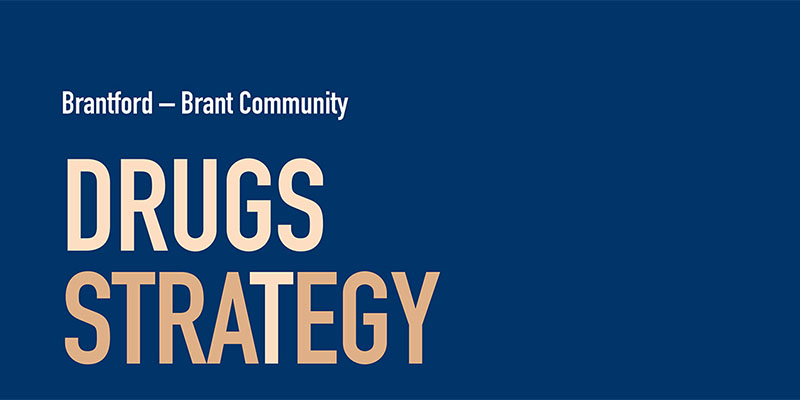Brantford-Brant Drugs Strategy partners urge extreme caution in wake of suspected overdoses

Brantford, ON: The opioid epidemic is a national public health crisis, responsible for the deaths of over 14,000 Canadians and more than 17,000 hospitalized for opioid-related poisoning over the last four years.
On Saturday, June 13, 2020 the Brantford Police Service and EMS first responders were called to incidents of suspected drug overdoses in our community which are believed to be the result of drugs mixed with fentanyl. Specific information regarding what contributed to the overdose incidents is unavailable at this time, however, illicit drugs such as fentanyl are known to be circulating in the community.
The Brantford-Brant Community Drugs Strategy (BBCDS) Coordinating Committee urges the public to be aware of the potentially fatal risk of using non-prescribed drugs that may be cut with or contain fentanyl.
If you think someone is suffering from a drug overdose, call 9-1-1- immediately. If available, administer naloxone while you wait for emergency services to arrive. Naloxone is an emergency medication that temporarily reverses the effects of an overdose from opioids such as fentanyl, heroin, methadone, or morphine. While naloxone can temporarily reverse an overdose, it can wear off before the person has completely recovered so always call 9-1-1 immediately if you suspect an overdose has occurred. If you have taken drugs or have drugs on you, the Good Samaritan Law can protect you.
Reduce your risk of an overdose
- Never use alone.
- Go slow if you are using a new substance; always take a small test dose first to see how it is going to affect you.
- Know and trust your source.
- Carry naloxone - a medication that can temporarily reverse an overdose.
- Call 9-1-1, even if naloxone has been given.
Signs and symptoms of a suspected overdose
- Can’t stay awake
- No strength or energy
- Cold, clammy skin
- Slow heartbeat
- Trouble breathing
- Slow, shallow breathing
- Gurgling or snoring sounds
- Lips and/or fingernails blue or purple
- Non-responsive to shouting
Additional Resources
- For more information regarding opioids, including what to do if someone has overdosed and where to access harm reduction services, please visit the Brant County Health Unit website.
- To know the facts about the dangers of fentanyl, visit www.FentanylCanKill.ca
- For more information regarding opioid statistics in our community, please visit the Brant/Brantford Opioid Information System webpage
-30-
Media Contact:
Maria Visocchi, Chair, Communications Working Group
BBCDS Coordinating Committee
519-759-4150 ext. 5754

 Subscribe to this Page
Subscribe to this Page






